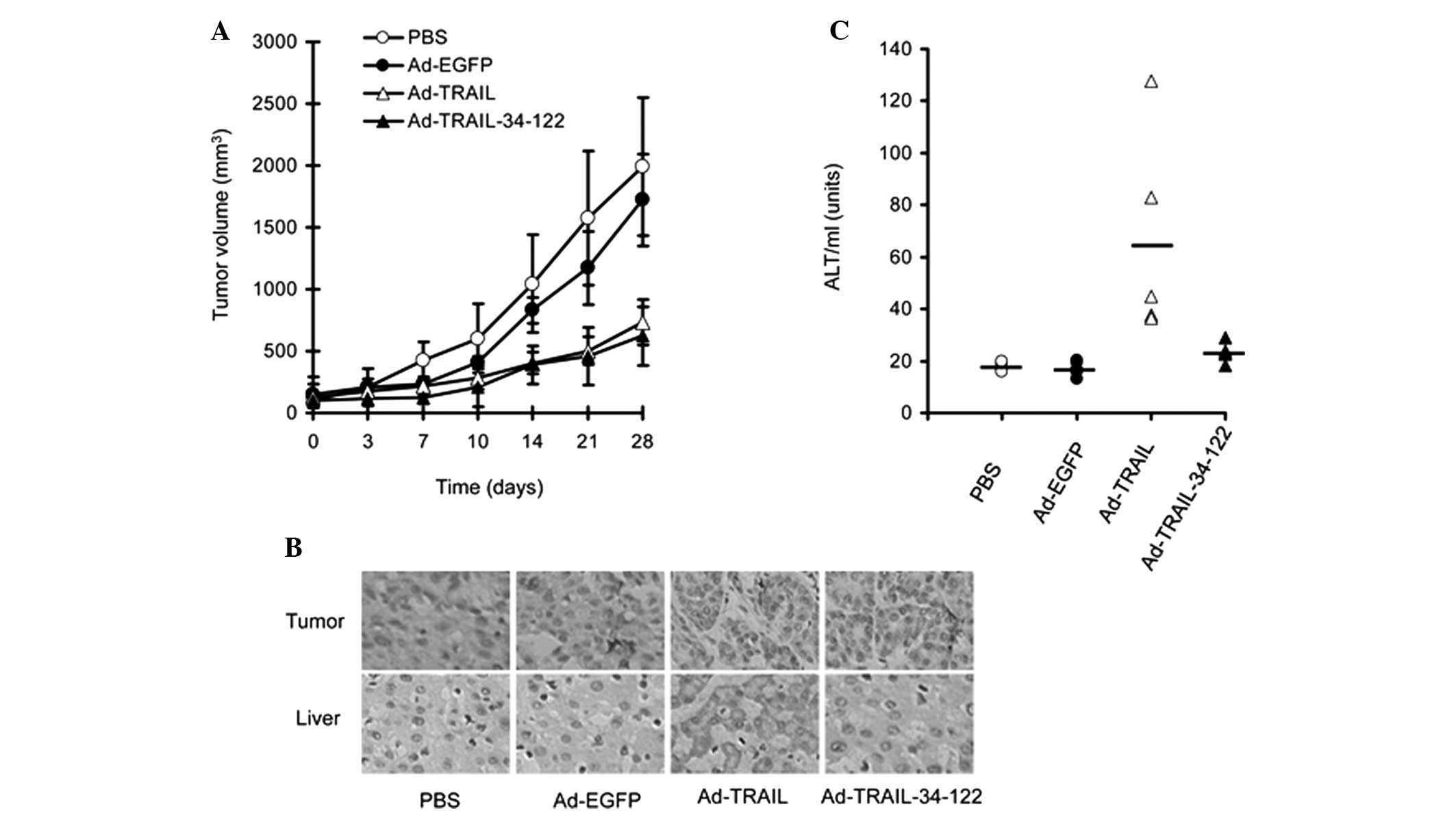Tumor necrosis factor‑related apoptosis‑inducing ligand induces cytotoxicity specific to osteosarcoma by microRNA response elements
- Authors:
- Published online on: October 20, 2014 https://doi.org/10.3892/mmr.2014.2710
- Pages: 739-745
Metrics: Total
Views: 0 (Spandidos Publications: | PMC Statistics: )
Total PDF Downloads: 0 (Spandidos Publications: | PMC Statistics: )
Abstract
As the most common primary bone neoplasm, osteosarcoma is highly aggressive and represents a high risk to human health. Biological agents, including tumor necrosis factor‑related apoptosis‑inducing ligand (TRAIL), are considered promising therapeutic strategies for osteosarcoma. The current issue limiting the application of TRAIL gene therapy is that normal cells are also affected due to the lack of tumor selectivity. The present study aimed to employ the miRNA response elements (MREs) of microRNA (miR)‑34 and miR‑122, which are tumor suppressors, to enable the selective expression of TRAIL by adenoviral vectors in osteosarcoma cells. The results revealed that miR‑34 and miR‑122 were underexpressed in osteosarcoma tissues, compared with normal tissues. The MREs of miR‑34 and miR‑122 ensured that the luciferase gene was expressed selectively in osteosarcoma cells. Adenovirus (Ad)‑TRAIL‑34‑122, which expressed TRAIL in an miR‑34 and miR‑122‑regulated manner, selectively expressed TRAIL in the osteosarcoma cells assessed, which was detected using reverse transcription quantitative polymerase chain reaction, immunoblotting and ELISA. Apoptosis and cytotoxicity were also detected in the osteosarcoma cells, compared with the normal cells. Animal experiments further indicated that Ad‑TRAIL‑34‑122 was able to reduce the growth of osteosarcoma xenografts without toxicity to the liver. In conclusion, the present study identified a novel miRNA‑regulated biological cancer therapy against osteosarcoma, which is tumor selective and may be promising for future clinical treatment.














